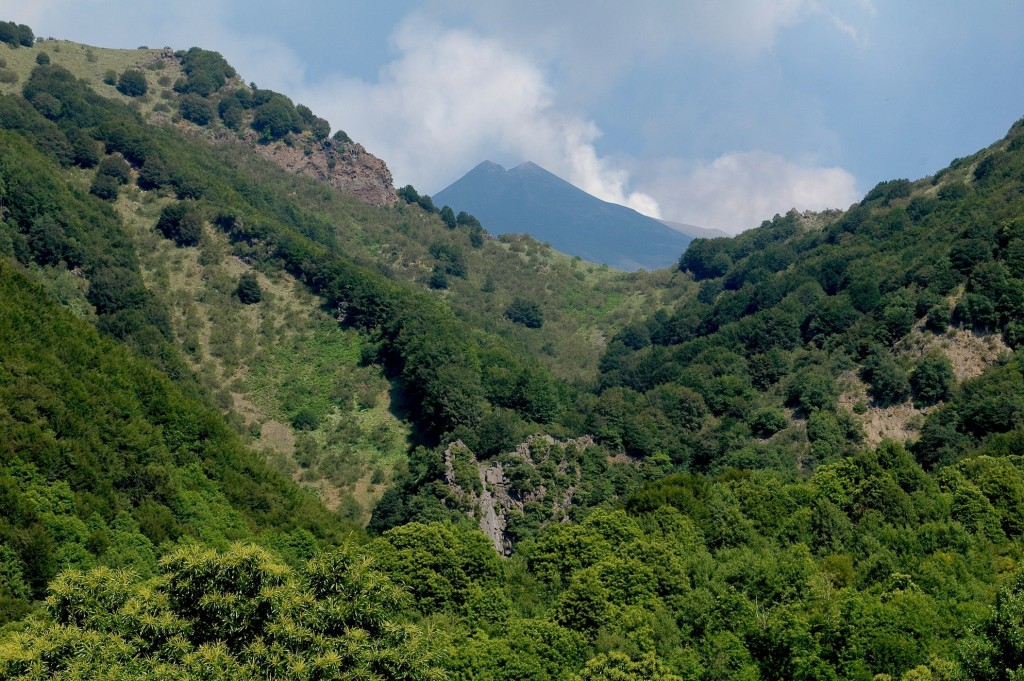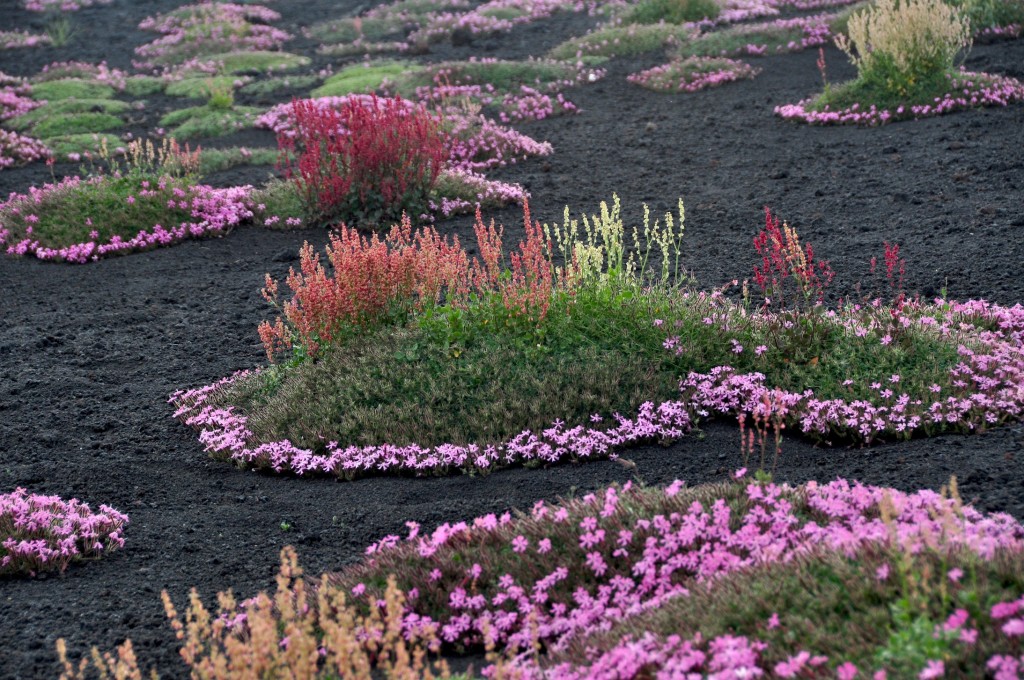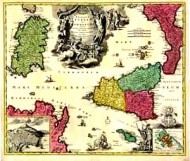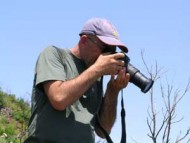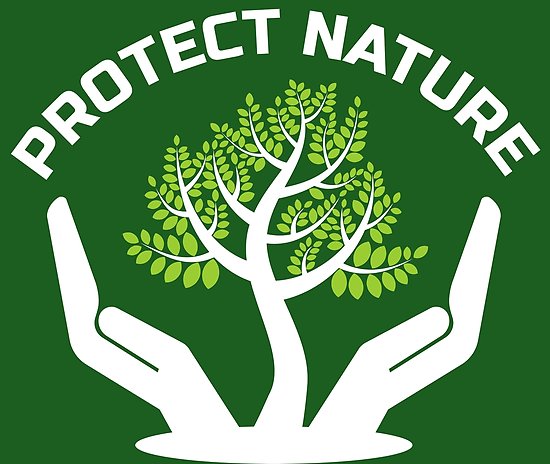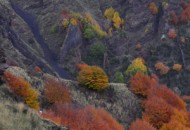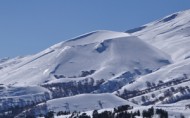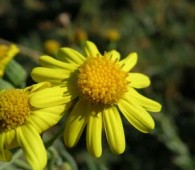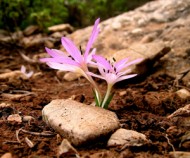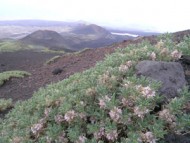Flora
This post is also available in: ItalianoEspañol
Etna’s Flora
Etna is an outstanding natural history laboratory and one of the areas of greatest naturalistic interest of the mediterranean basin. The botany of this park is remarkable for several reasons that I will illustrate in this page.
Unique vegetation landscape
This volcano has extensive areas covered with vegetation, despite much of the territory is frequently crossed by lava flows that destroy everything in their paths. The volcanoes of the mid-latitudes usually do not have extended green areas. On the contrary there are some glimpses of the Etna landscape where the vegetation is so lush to remember the landscapes of some tropical volcanoes. The contrast between the green of the woods and the dark colour of recent lava fields creates a unique and surreal landscape. In addition, this volcano offers a great botanical diversity that is manifested vertically with altitude variations, but also horizontally moving from one side to the other of the volcano.
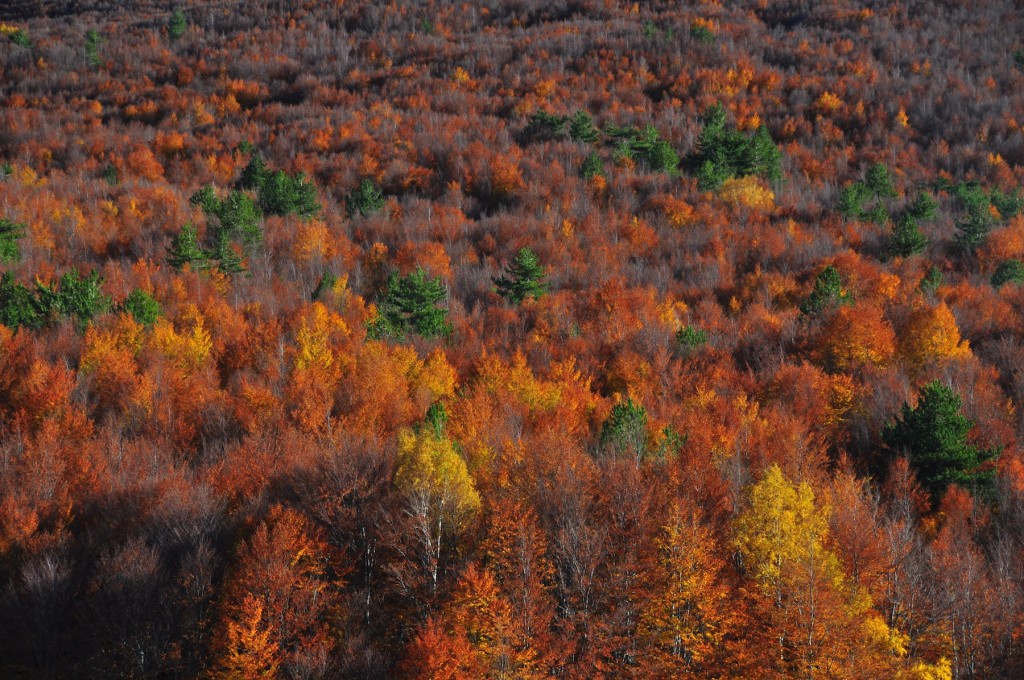
Extended blooming season
If you think the landscape of a volcano has to be a monotonous succession of lava deserts, you will be surprised by the colouring of Etna landscape! In fact here there is a very extended period of blooms that occurs in different seasons at different altitudes, therefore Mt.Etna for many months every year can be seen adorned by the beautiful colours of flowers. In autumn the volcano show another enchanting display of chromatism when the the leafs of deciduous trees provide us with a colourful palette of yellows, oranges, and reds.
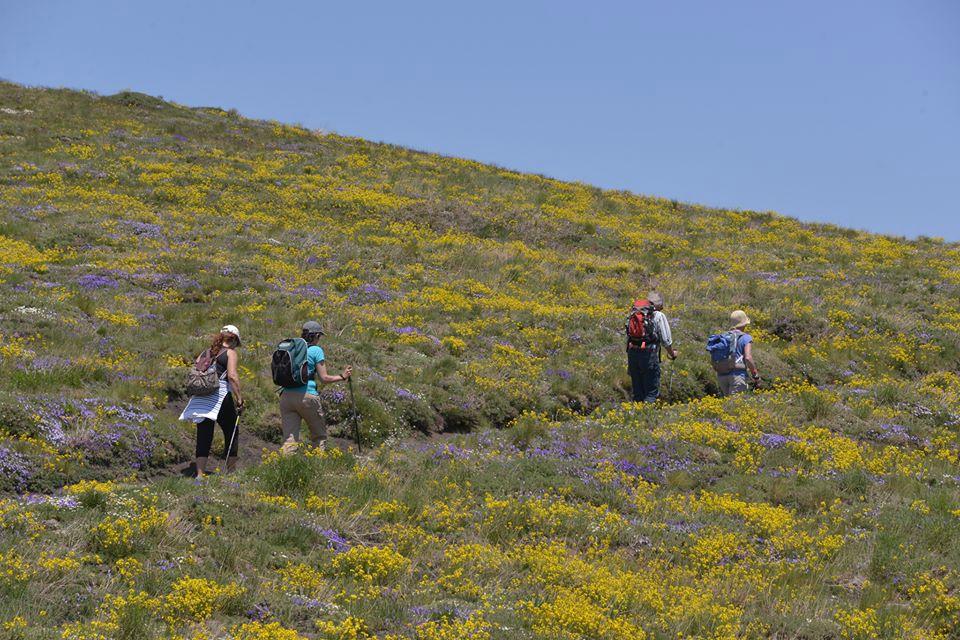
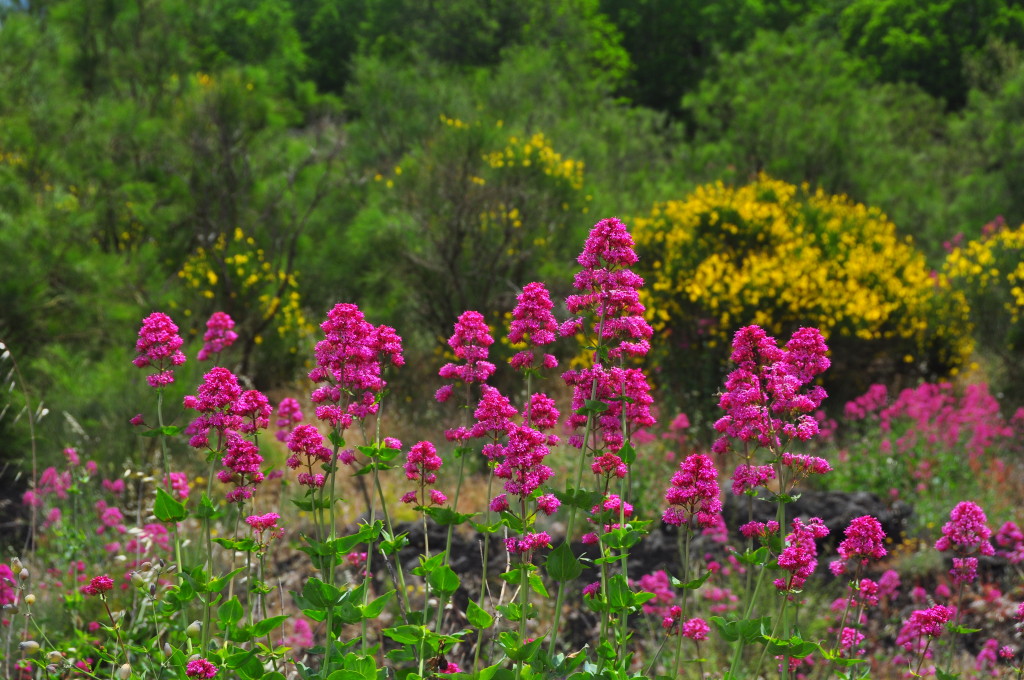
Numerous endemisms
Etna is also rich in endemic species unique of this park. We remInd you that a plant or a tree are defined endemic when they are proper and exclusive of a circumscribed territory and they are not present elsewhere. In fact Etna has formed an habitat so extreme that many plants and trees have had to change their characteristics to adapt and survive, transforming themselves in species existing only in this area. During a naturalistic excursion we will be pleased to show you some of the endemisms of the park and to provide detailed informations about them.
Here few examples :
The Anthemis aetnensis and the Senecio aetnensis beautiful plants so adapted to this environment to be the only two able to survive incredibly up to 3050 m. above the sea level. Worth to be remembered also the Rumex aetnensis, the Cerastium aetneum, the Berberis aetnensis, the Sclerantus aetnensis, the Viola aetnensis, etc.
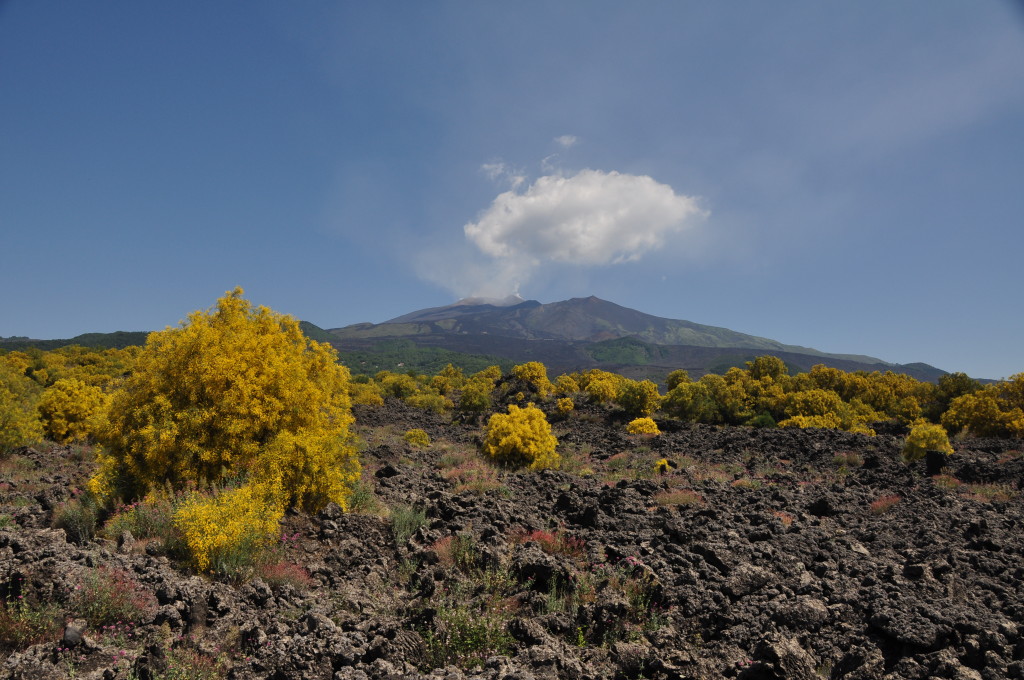
Altimetric distribution of vegetation
The variety of Etna’s flora mirrors the presence of several climatic zones that strech from the sea level to the summit.
The lower one is Basal-Mediterranean zone (from 0 to 1400m.). This is the area with greatest botanical diversity that goes from mediterranean scrub and evolves into a wood of holm oaks (Quercus hilex), chestnuts (Castanea sativa), deciduous oaks (mostly Quercus pubescens) and the Etna broom, Genista aetnensis. It is usually divided in three different belts: Therm med., Meso med. and Supra med.
Then there is the Mountain-Mediterranean zone (from 1400 to 2000/2200 m.) that reaches the timberline. In this belt you have a very peculiar forest that survived the glacial period of the Würm (that finished about 10k years ago) evolving independently. There the Pine tree (Pinus nigra laricio), tree typical of the extended pre-glacial forests of Europe that during the last glaciation migrated slowly southward. Today this variety of pine tree is present only here in Corsica and in Calabria and it disappeared in the rest of the continent. There is the Beech tree (Fagus sylvatica), another glacial relict, that has a high botanic relevance because the beech forest here reaches the lowest latitude and the highest altitude in Europe! There is also the endemic Birch tree (Betula aetnensis) the third glacial relict that found refuge around the volcano during the last ice age and then evolved in a such different way that is unique of this park.
Going higher in altitude we find the High-Mediterranean zone that stretches from the timberline (about 2000 m.) to the limit of survival of pioneer plants (3050 m.), the beginning of the high altitude volcanic desert. From the altitude where the trees do not find any longer the conditions to survive, starts an extraordinary belt of vegetation, the Astragaletum siculi, made of endemic plants very specialized. A similar habitat is so peculiar that is not found anywhere else in the world! The name is taken from the endemic plant Astragalus siculus that forms typical low thorny bushes. Above 2500 m. all the way to 3050 the vegetation becomes increasingly sparse until you find only few isolated pioneer endemic plant, “engineered” to survive to the most extreme habitat of Mt. Etna. Above this limit there is the high altitude rocky desert where the extraordinary energy of this volcano is expressed in such an extreme way that any form of plant life is impossible.

